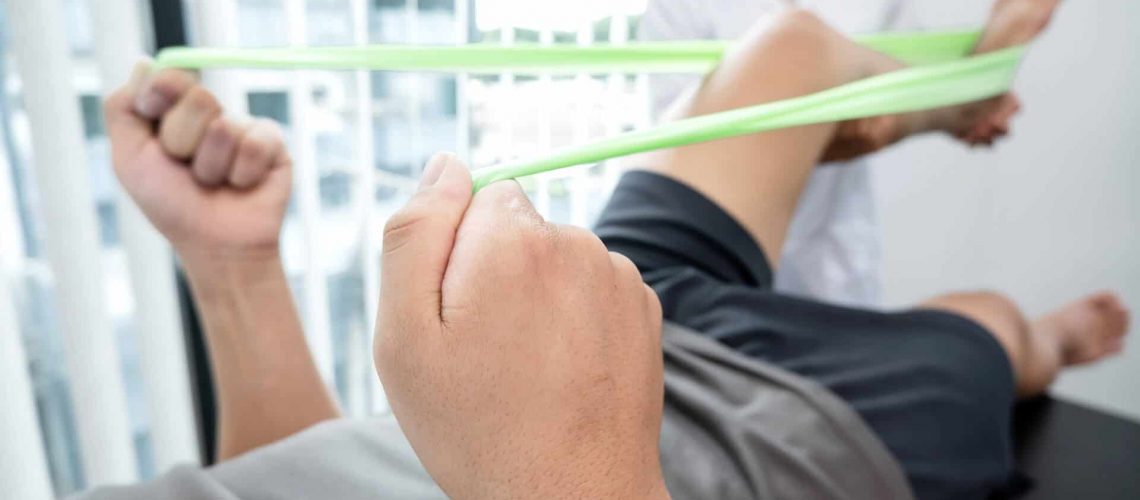You’ve lived an active lifestyle for years — and have never had any problems.
Now, you just wrapped up a run along your favorite trail and noticed for the second time this week some pain in the back of your knee. It’s like you can’t seem to get through an activity you enjoy without that twinge of pain surfacing.
So what’s next? Do you just ignore the problem and hope it goes away? Do you make an appointment with a physical therapist? Do you see an orthopedist?
Knees are one of the most injury-prone areas of the body. So it’s no wonder that you’re experiencing frequent problems if you’re active.
The knee is one bone sitting on top of another, composed of many parts working together to do what we need it to do. Knees are made up of ligaments, tendons, muscles, and nerves. Over time and with excessive activity or pressure, the parts making up the knee may lose stability and wear down.
Some of the most common injuries to the knee happen because of wear and tear over time and are felt most in the back of the knee. There are various causes for pain behind the knee, athletic or otherwise, that could imply serious medical complications if not handled properly.
From torn ligaments to sprains, strains, and overuse, here are the top five most common knee injuries as well as the important information you need to know about each one.
Contents
1. Meniscus Tear
A meniscus tear is a tear of the wedge-shaped piece of cartilage that cushions and stabilizes your knee joint.
A tear in your meniscus can happen when you’re squatting or twisting your knee, or it can simply degenerate over time.
Some common symptoms include stiffness, swelling, and locking of the knee joint. Treatment includes rest, ice, elevation, and — in some more extreme cases, surgery.
2. ACL Tear
An ACL tear is a tear of the anterior cruciate ligament connecting the femur and tibia in your leg. A tear in your ACL occurs with a sharp or sudden change in direction or speed, usually in athletics.
Some common symptoms include sudden popping of the knee, swelling, and limited movement in the knee. Treatment includes rest, ice, elevation, and — in some more extreme cases, surgery. Physical therapy can also help treat a strain.
3. Bursitis
Bursitis is inflammation of the bursa sac (cushion in the knee) that reduces friction between the bones, tendons, muscles, and skin near your knee joints. There are 11 bursae found in and around the knee.
Bursitis usually occurs due to frequent pressure from kneeling or landing, overuse, trauma to the knee, or — in more serious cases, a bacterial infection.
Symptoms of bursitis may include stiffness and pain when walking, redness, and swelling. Treatment includes ice, elevation, avoiding high-impact activity, elevation, or surgical aspiration of fluid from the bursa sac in extreme cases.
4. Osteoarthritis
Osteoarthritis is the breakdown of the cartilage/cushion between joints.
Osteoarthritis results from degeneration of the cartilage tissue over time. While arthritis can affect any age group, osteoarthritis is most common in adults ages 65 and older.
Symptoms may include stiffness, soreness, swelling, and difficulty stretching. Treatment can vary from easy exercise and stretching via physical therapy to anti-inflammatory medicines or cortisone injections.
5. Tendonitis
Tendonitis is the strain or inflammation of the tendons connecting your thigh’s muscle to your knee and lower leg.
Tendonitis results from overuse of a tendon — such as excessive exercise, repetitive motions, or through long periods of inactivity.
Symptoms can include sharp pain, weakness, throbbing, stiffness, and swelling. Treatment includes rest, ice, compression, and elevation. In more extreme cases, physical therapy may be necessary.
Don’t Live with Knee Pain.
Get Help From an Orthopedic Professional.
As some of the most common knee issues among athletes and the elderly, these knee injuries can become severe if not handled properly. To accurately diagnose a persistent knee injury, making an appointment with your orthopedist is crucial, whether it is to do an X-Ray, MRI, or a similar test.
The earlier you diagnose the problem, the sooner you can begin the recovery process. If a knee injury is holding you back, request an appointment with Thunder Basin Orthopaedics.
With offices conveniently located in Douglas and Gillette, the Thunder Basin Orthopaedics team is ready to help you get back in the game. At Thunder Basin Orthopaedics and Sports Medicine, our surgeons are well-experienced and specialize in treating various orthopaedic injuries, including sports injuries.
Our expert staff and experienced surgeons offer the best possible treatment and utmost care to each individual. Make an appointment or contact Thunder Basin Orthopaedics today!


